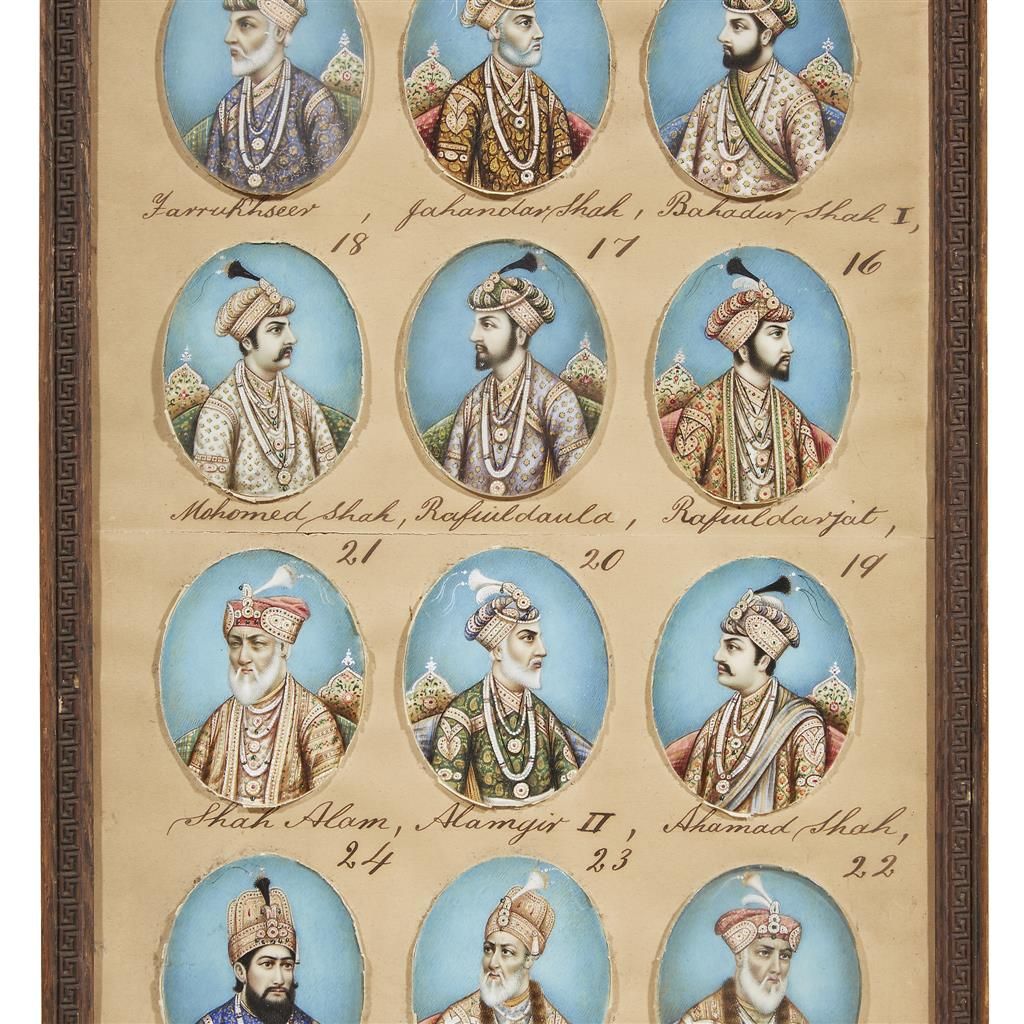
BAHADUR SHAH – I (AD 1707-1712)
Real name is Muazzam, ascended the Mughal throne with the title Bahadur Shah. He also assumed the title Shah Alam-I
Pursued pacifist policy and was therefore known as Shah Bekhabar.
He made peace with Guru Gobind Singh and Chhatrasal. He granted Sar Deshmukhi to Maratha and released Shahu.
He forced Ajit Singh of Marwar to submit but later recognized him as the Rana of Marwar. He defeated Banda Bahadur at Lohagarh.
He was not able to eliminate Jaziya, but he supported music.
JAHANDAR SHAH (AD 1712-1713)
Jahandar Shah won the war of succession due to the support of Zulfiqar Khan, the most powerful Iranian noble of the time.
He was the first puppet Mughal emperor.
Jai Singh of Amber was given the title of Maharaja. He abolished Jaziya.
FARRUKHSIYAR (AD 1713-1719)
Ascended the throne with the help of Sayyid brothers (Abdullah Khan and Husasain Khan) who were the Wazir and the Mir Bakshi respectively.
Zulfiqar Khan was murdered.
Banda Bahadur was executed at Gurdaspur. Farrukhsiya was murdered by the Sayyid brothers with the help of Marathas, in AD 1719.
The Surman Commission visited his court.
MUHAMMAD SHAH (AD 1719-1748)
Ascended the throne with the help of Sayyid brothers (kingmakers). Sayyid brothers were killed under a conspiracy hatched by the nobles in 1720.
Nizam0ul-mulk was appointed as the Wazir, but he relinquished the post in 1722 and marched towards Deccan and founded an autonomous state Hyderabad.
During his reign, Bengal acquired virtual independence during the governorship of Murshid Quli Khan.
Saadat Khan (Burhan-ul-Mulk), who was appointed as the Governor of Awadh, laid down the foundation of the autonomous state.
Nadir Shah invaded India in AD1739 and defeated Muhammad in the battle of Karnal (1739) and he took away Takti-i-Taus (Peacock throne) and the Kohinoor diamond.
He was a pleasure loving king and was nicknamed Rangeela.
Kohinoor Diamond: Most sources agree that the Kohinoor was mined at Rayalaseema in Andhra Pradesh. It was first owned by the Kakatiya dynasty. From then onwards, the stone passed through the hands of successive rulers of the Delhi Sultanate, finally passing to Babur in 1526. Shah Jahan had the stone placed into his ornate Peacock Throne. It was taken away by Nadir Shah in 1739 along with the Peacock Throne.
The diamond then changed hands between various empires in south and west Asia, until being given to Queen Victoria after the Second Anglo-Sikh War and the British East India Company's annexation of the Punjab in 1849, during the reign of the then 11-year-old Maharaja of the Sikh Empire, Duleep Singh.
AHMED SHAH (AD 1748-54)
Ahmed Shah Abdali invaded Delhi many times and Punjab and Multan were ceded to him.
ALAMGIR II (AD 1754-1759)
Ahmed Shah Abdali occupied Delhi during his reign. He defeated the Marathas in the Third Battle of Panipat in 1761. In this battle, Marathas were led by Sahashiv Rao Bhau, while the Peshwa at that time was Balaji Bajirao.
SHAH ALAM II (1759-1806)
He crowned himself under Shajauddaula’s protection in Bihar and remained in exile for 12 years.
He fought the Battle of Buxar in AD1764 and was defeated by the British. He lived for several years at Allahabad as a pensioner of the East India Company.
By the Treaty of Allahabad, the emperor received the territories of Allahabad and Kara and an annual tribute of 26 lakhs from Bengal.
By a Farman, the emperor confirmed the English gains and granted them the Diwani of Bengal, Bihar and Orissa.
AKBAR-II (AD 1806-37)
The king gave Raja Rammohan Roy, the title of Raja.
Lord Hastings ceased to accept the sovereignty of Mughals and claimed the status of pensioner of the East India Company.
BAHADUR SHAH – II (AD 1837 – 1857)
He was the Last Mughal Emperor. He was confirmed by the British in the Red Fort.
During the 1857 sepoy revolt, he was proclaimed the emperor of India by the rebels. He was deported to Rangoon and died there, in 1862 AD.
He used to write Shairis in the pen-name of Zafar.
